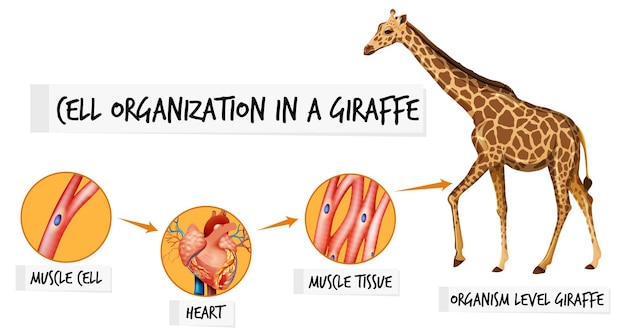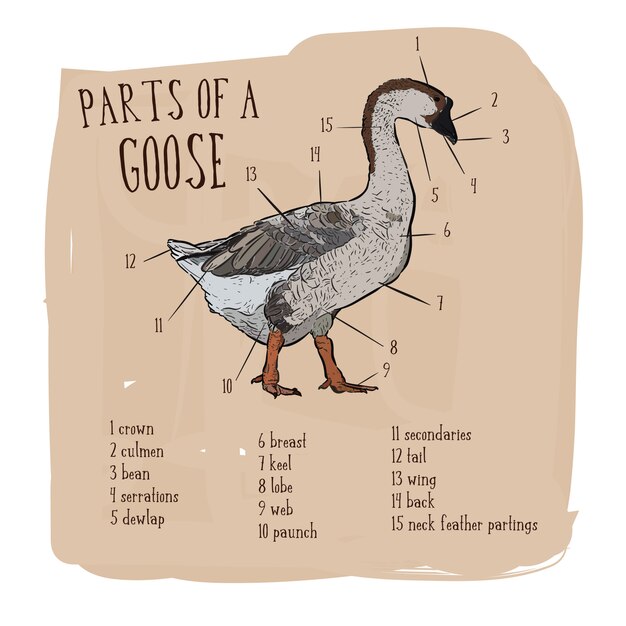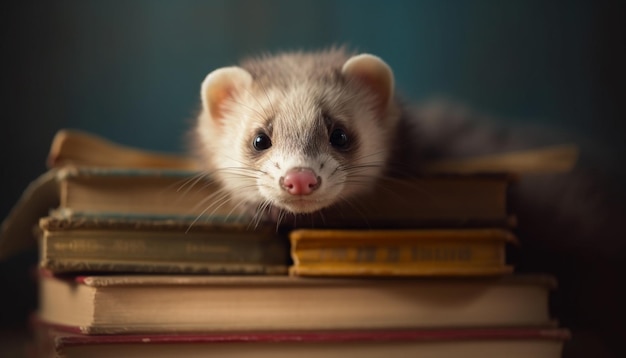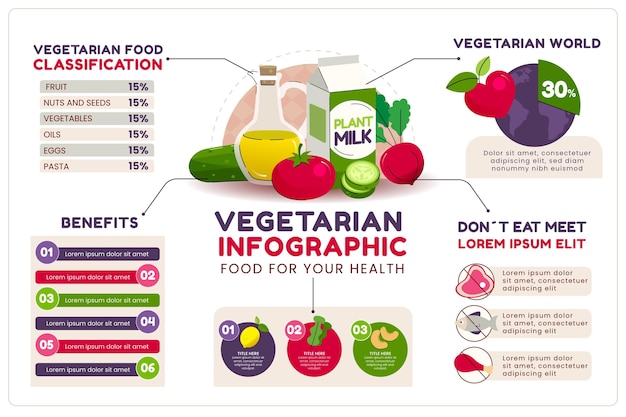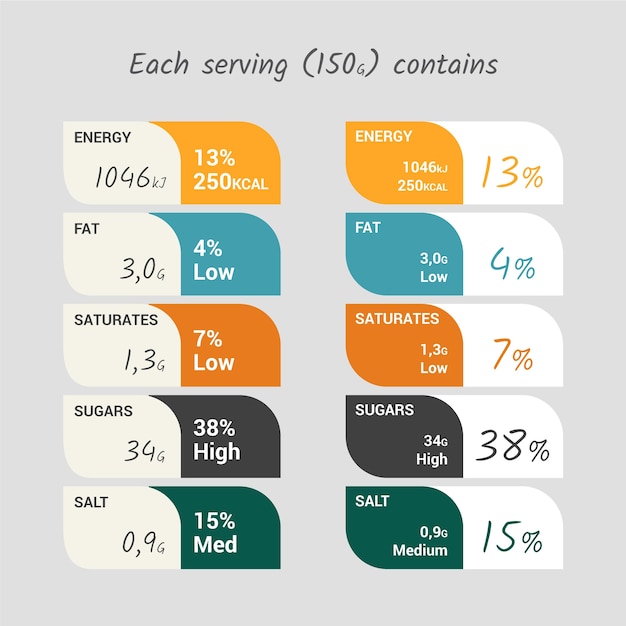Fascinating Facts about Hernan Cortes
Hernan Cortes was a Spanish explorer who played a crucial role in the Spanish conquest of the Aztec Empire.
Cortes was born in Medellin, Spain, in 1485.
He studied law at the University of Salamanca but left it to pursue adventures in the New World.
In 1504, he sailed to the Americas and settled in Hispaniola.
Cortes participated in expeditions to Cuba and Hispaniola before setting his sights on the Aztec Empire.
He led an expedition of over 500 men from Cuba to Mexico in 15
7. Cortes is famously known for burning his ships upon arrival in Mexico to ensure his men were committed to the conquest.
He formed alliances with native tribes who were enemies of the Aztecs, such as the Tlaxcalans.
Cortes faced numerous challenges from both native resistance and Spanish officials who opposed his actions.
He captured Aztec leader Moctezuma II, who became a puppet ruler under Cortes’ control.
Cortes and his men ultimately laid siege to the Aztec capital, Tenochtitlan, leading to its fall in 15
After the fall of Tenochtitlan, Cortes became the governor and captain general of New Spain (modern-day Mexico).
He implemented policies to control and exploit the resources of New Spain for Spain’s benefit.
Cortes undertook several expeditions to explore and conquer other regions within Mexico.
He discovered the Baja California Peninsula and the Pacific Ocean during his expeditions.
Despite his achievements, Cortes faced many legal troubles and trials due to conflicts with Spanish officials.
He returned to Spain in 1541 to defend his reputation and was partially successful.
Cortes retired from public life after his return to Spain and died in 1547.
He was known for his ambition, military strategies, and charismatic leadership.
Cortes is often reviled for his brutal conquest, which resulted in the destruction of Aztec civilization.
However, he is also admired for his role in bringing European influence to the Americas.
Cortes’ conquest had long-lasting effects on the cultural, political, and social landscape of Mexico.
The conquistador had a complex relationship with native women, including a famous liaison with Malinche, a Nahua woman who served as his interpreter.
Cortes introduced European livestock, crops, and diseases to the Americas, greatly altering the environment.
He was notorious for his harsh treatment of indigenous peoples and the forced conversion to Christianity.
Despite his brutality, many indigenous groups also resisted Spanish rule under Cortes’ leadership.
Cortes was one of the first Europeans to witness and describe the magnificent temples and buildings of Tenochtitlan.
The conquest of the Aztec Empire allowed Spain to establish a vast colonial empire in the Americas.
Cortes’ conquest paved the way for future Spanish expeditions and conquests in the Americas.
He played a significant role in the European colonization of the Americas.
The conquest made Cortes a wealthy man, although much of his wealth was lost in lawsuits and legal battles.
He was known for his love of gold and attracted many men to join his expeditions with promises of riches.
Cortes became a symbol of Spanish heroism and imperialism.
His conquest inspired many legends, stories, and historical accounts.
Cortes’ expeditions were a pivotal moment in world history, marking the beginning of the end for indigenous empires in the Americas.
It is believed that Cortes suffered from various health problems throughout his life, including an infection that caused his death.
Some historians debate whether Cortes was a cruel conqueror or a product of his time, navigating a brutal era of colonization.
Cortes’ conquest also had a significant impact on the Spanish Empire, making it one of the wealthiest and most powerful empires in the world.
The encounter between Cortes and the Aztecs brought together two vastly different cultures, leading to a clash of beliefs and practices.
Today, Hernan Cortes is remembered as a controversial figure in both Spanish and Mexican history.
Museums and historical sites in Mexico display artifacts and information related to Cortes’ conquest.
The writings of Cortes, such as his letters to the Spanish crown, provide valuable insights into the conquest and Aztec society.
Cortes’ name is often mentioned in discussions about colonialism and its long-lasting effects.
The legacy of Cortes’ conquest continues to shape the identity and national narrative of Mexico.
Studying the life and actions of Hernan Cortes allows us to reflect on the complexities and consequences of European colonization in the Americas.
Fascinating Facts about Helen Keller
Helen Keller became deaf and blind at the age of 19 months due to an illness.
Despite her disabilities, Helen Keller learned to read and write in multiple languages.
Helen Keller was an advocate for women’s suffrage and a prominent feminist.
She was the first deafblind person to earn a bachelor’s degree.
Helen Keller wrote 12 published books in her lifetime.
She met prominent figures such as Alexander Graham Bell and Mark Twain.
Helen Keller was an avid social activist, advocating for rights and opportunities for people with disabilities.
She was awarded the Presidential Medal of Freedom, the highest civilian honor in the United States.
Helen Keller traveled to over 39 countries, promoting the importance of education for all.
She co-founded the Helen Keller International organization, dedicated to preventing blindness and reducing malnutrition.
Helen Keller’s life story inspired the 1962 movie The Miracle Worker.
She learned to speak with the help of her teacher, Anne Sullivan.
Helen Keller gave lectures and speeches around the world, inspiring millions with her story of determination.
She was an honorary member of the National Women’s Party.
Helen Keller was a member of the American Foundation for the Blind, contributing to their advocacy and research efforts.
She was a source of inspiration for many other individuals with disabilities, proving that anything is possible with determination and perseverance.
Helen Keller was fluent in Braille, a system of raised dots used by blind people to read and write.
She was an early adopter of technology, using a typewriter to communicate with others.
Helen Keller was awarded honorary degrees from several universities, including Harvard and Yale.
She dedicated her life to improving conditions for people with disabilities and promoting equal opportunities.
Helen Keller’s autobiography, The Story of My Life, is still widely read and studied today.
She advocated for the establishment of schools and resources for blind and deaf children.
Helen Keller wrote articles and essays on a wide range of topics, including politics and spirituality.
She helped establish libraries for the blind across the United States.
Helen Keller’s teacher, Anne Sullivan, played a crucial role in her education and development.
She was a member of the Socialist Party and campaigned for socialist causes.
Helen Keller received numerous awards and honors for her contributions to society.
She was known for her strong will and determination, never letting her disabilities hold her back.
Helen Keller’s life story continues to inspire people of all ages and backgrounds.
She was an early advocate for animal rights and spoke out against cruelty to animals.
Helen Keller was a champion for the rights of workers and supported labor movements.
She helped establish the American Civil Liberties Union (ACLU) and served on its board.
Helen Keller was a vocal critic of war and supported pacifist movements.
She was a skilled pianist and enjoyed playing the piano in her spare time.
Helen Keller’s legacy includes the Helen Keller Archives, which preserve her writings and personal artifacts.
She received the Goodwill Ambassador of the World title from the United Nations.
Helen Keller’s resilience and determination serve as a reminder to never give up, regardless of the challenges we face.
She believed in the power of education to transform lives and advocated for accessible education for all.
Helen Keller’s life story has been adapted into numerous plays, films, and TV shows.
She was an advocate for women’s empowerment and fought for their equal rights.
Helen Keller overcame tremendous obstacles to become a role model for people with disabilities worldwide.
She understood the importance of empathy and compassion in creating a more inclusive society.
Helen Keller tirelessly campaigned for improved living conditions and treatment of mentally disabled individuals.
She was an active member of the American Red Cross, participating in disaster relief efforts.
Helen Keller’s message of hope and perseverance continues to inspire generations to make a difference in the world.
Goblin Shark Facts – Unveiling the Mysteries of this Fascinating Deep-Sea Creature
The goblin shark is a fascinating deep-sea creature.
With its long, protruding snout, the goblin shark has a unique appearance.
These sharks are rarely seen by humans due to their deep-sea habitat.
Goblin sharks have a retractable jaw that can extend to catch prey.
Despite their appearance, goblin sharks are actually harmless to humans.
These sharks have been around for millions of years, making them living fossils.
Goblin sharks have a pinkish coloration, making them stand out among other shark species.
Their flexible body helps them maneuver through the deep-sea environment.
Goblin sharks are known for their ability to detect electrical impulses in the water.
These sharks have a slender body shape, allowing them to swim effortlessly.
Goblin sharks primarily feed on smaller fish and crustaceans.
Due to their deep-sea lifestyle, goblin sharks have adapted to survive in extreme pressure environments.
These sharks can grow up to 3.8 meters in length.
Goblin sharks have relatively long lifespans, living up to 35 years.
With their unique appearance, goblin sharks have become a subject of interest for marine biologists.
Despite their elusive nature, scientists have studied goblin sharks using underwater cameras and remotely operated vehicles.
Goblin sharks have a keen sense of smell, allowing them to locate potential prey from a distance.
These sharks are mostly solitary creatures, preferring to live and hunt alone.
Goblin sharks have a low reproductive rate, with females typically giving birth to only a few pups at a time.
Due to their deep-sea habitat, goblin sharks have few natural predators.
Goblin sharks are considered living relics of ancient shark species.
The retractable jaw of goblin sharks allows for a sudden and powerful bite.
These sharks have specialized teeth designed for capturing and holding onto slippery prey.
Goblin sharks have excellent vision, enabling them to spot prey in low-light conditions.
Given their deep-sea habitat, it is challenging to observe goblin sharks in their natural environment.
Goblin sharks possess an elongated, flattened snout that sets them apart from other shark species.
These sharks are known for their ability to extend their jaws up to a remarkable distance.
Goblin sharks have been identified in various parts of the world, including off the coasts of Japan, New Zealand, and the United States.
Their pink coloration stems from blood vessels located close to the skin’s surface.
Goblin sharks have slender, pointed teeth that are excellent for piercing and capturing prey.
Unlike some other shark species, goblin sharks do not actively hunt humans.
The deep-sea pressures endured by goblin sharks would be fatal to most other animals.
Despite their unique features, goblin sharks are not considered a threat to marine ecosystems.
Goblin sharks have become an iconic figure in the world of marine biology.
The mysterious nature of goblin sharks adds to their allure for marine enthusiasts.
Goblin sharks are thought to be capable of sensing water temperature changes, allowing them to locate prey.
Unlike other shark species, goblin sharks do not have a nictitating membrane to protect their eyes.
Goblin sharks are an excellent example of the incredible diversity found in our oceans.
These sharks have an incredibly oily liver, which aids buoyancy in deep-sea environments.
Goblin sharks have been observed at depths of up to 1,300 meters.
The long, pointed snout of goblin sharks has earned them the nickname vampire shark.
Goblin sharks have a relatively small mouth, making it challenging for them to devour large prey.
Despite their deep-sea lifestyle, goblin sharks occasionally venture into shallower waters, surprising fishermen.
The pink hue of goblin sharks fades after death, turning into a more grayish color.
Goblin sharks serve as a reminder of the vast mysteries that still lie beneath the surface of our oceans.
Discover Fascinating Flamingo Facts for Kids
Flamingos are unique birds with long, thin legs and bright pink feathers.
Did you know that flamingos can stand on one leg for hours? It helps them conserve energy!
Flamingos are excellent swimmers, using both their feet and wings to navigate through water.
These beautiful birds love to live in groups called colonies. Sometimes, thousands of flamingos can be found in one colony!
Flamingos have a special filter in their beak that helps them eat. They scoop up water and mud, then filter out tiny organisms to eat.
Flamingos are not born pink. Their feathers turn pink because of the food they eat, like shrimp and algae.
Baby flamingos are called chicks. They have gray feathers and a straight beak which gradually curves as they grow up.
Flamingos build their nests out of mud. Their nests are shaped like a volcano, providing protection for their eggs.
Flamingo parents take turns incubating their eggs. Both the mother and father bird share this responsibility.
Flamingos are loud birds and make a variety of calls. The sound they make is often described as a honking noise.
Flamingos have a wingspan of about 5 feet (1.5 meters), making them graceful flyers.
These birds are known for their synchronized movements. When a flock of flamingos takes flight, it’s a stunning sight!
Flamingos are native to Africa, Asia, the Americas, and Europe. They can be found in many different habitats, including lakes, lagoons, and salt pans.
The oldest flamingo on record lived to be 83 years old! These birds can have a long lifespan if they are well-cared for in captivity.
Flamingos communicate with each other by vocalizing, head-flagging, and even dancing together!
Flamingos have webbed feet, which make it easier for them to walk in muddy areas and swim in shallow water.
Flamingos are social creatures and often preen each other’s feathers to keep them clean and healthy.
Flamingos are excellent parents and teach their chicks important skills, like finding food and avoiding predators.
Did you know that flamingos don’t live in the wild in Antarctica? The cold temperatures are not suitable for them.
When flamingos sleep, they tuck their heads under their wings and balance on one leg. It’s their way of protecting themselves while resting.
Flamingos have a specialized digestive system that allows them to eat and digest both plants and small organisms.
Flamingos have a good sense of balance, which helps them walk steadily on uneven or slippery surfaces.
Flamingos are monogamous birds, meaning they have a single partner for life. How romantic!
Flamingos play an important role in their ecosystems as filter feeders. They help maintain healthy water quality and balance the population of small organisms.
Flamingos have been featured in many famous artworks and have become a symbol of grace and elegance.
Flamingos have long necks, which help them reach their food underwater and also allow them to groom their feathers.
The collective noun for a group of flamingos is a flamboyance. It’s the perfect word to describe their vibrant and colorful appearance!
Flamingos have been on Earth for millions of years. They are ancient creatures that have adapted to survive in different environments.
Some flamingo species can fly long distances when they need to find a suitable habitat or escape unfavorable conditions.
Flamingos have a short and stubby tail, which helps them maintain their balance while standing on one leg.
The bright pink color of a flamingo’s feathers comes from their diet of shrimp and other crustaceans that contain pigments called carotenoids.
Flamingos have excellent eyesight and can spot predators or potential food sources from long distances.
Flamingos are curious birds and often investigate their surroundings by immersing their beak in the water or mud.
The flamingo’s beak is a unique tool that allows them to filter food, scoop mud to build their nests, and even defend themselves if necessary.
The wings of a flamingo are not just for flying. They also help the bird maintain balance and regulate its body temperature.
Flamingos can drink boiling hot water without hurting themselves. Their beaks have special adaptations to deal with extreme temperatures.
Flamingos are excellent parents and fiercely protect their eggs and chicks from any potential threats.
These birds are masters of grooming. They use their beak to apply oil from a gland near their tail and spread it over their feathers to keep them waterproof.
Flamingos are highly adaptable and can live in both freshwater and saltwater habitats.
Flamingos are known for their elaborate courtship displays, which involve synchronic wing-flapping and head-turning.
Flamingos can live up to 30 years in the wild, but they can reach 50 years or more in captivity with proper care.
Flamingos have a unique way of cooling down on hot days. They stand in shallow water and splash it onto their body, creating a cooling effect.
Flamingos are not aggressive creatures, but they will defend themselves and their young if threatened. They may use their beak as a weapon if necessary.
The long legs of a flamingo are covered in scales, which protect them from the harsh elements and provide stability when standing on various surfaces.
Finally, flamingos are a symbol of beauty and grace, reminding us of the diversity and wonder of the natural world.
Amazing Facts About Electric Eels
Electric eels can generate electricity of up to 600 volts, which is enough to stun or kill their prey.
Electric eels have specialized organs called electrocytes that produce their electrical discharges.
Despite being called eels, electric eels are actually closer relatives to catfish.
Electric eels can release a series of rapid electric pulses to communicate with other eels, similar to Morse code.
The electric eel’s electrical discharge is so powerful that it can disable a human for a short period of time.
Electric eels mainly inhabit the freshwaters of the Amazon Basin.
Electric eels have poor eyesight but possess an extraordinary ability to navigate using electrical signals.
Electric eels can generate electricity for both offensive and defensive purposes.
The electric eel’s shocking power can be used as a form of self-defense against predators.
Electric eels are capable of detecting prey by emitting electric pulses and sensing the electrical fields around them.
Electric eels have been known to eat other fish, amphibians, and even small birds.
Electric eels have an elongated, snake-like body, which helps them maneuver through the water.
The electrical pulses produced by electric eels can last up to two milliseconds.
Electric eels have the ability to disguise their presence by emitting weaker electrical signals.
Electric eels have been studied by scientists to develop new technologies in the field of bioelectricity.
Electric eels have a unique ability to regenerate damaged electrocytes.
Electric eels can hunt in both brightly lit and dark waters due to their electrolocation abilities.
Electric eels have been observed leaping out of the water to attack prey or threaten predators.
Electric eels are capable of delivering electric shocks to more than one target simultaneously.
Electric eels have a lifespan of approximately 10-15 years in the wild.
Electric eels have been used by indigenous South American people for fishing, stunning large prey.
Electric eels are solitary creatures and prefer to be alone rather than in groups.
Electric eels have a unique ability to breathe atmospheric air, allowing them to survive in oxygen-depleted waters.
Electric eels lay their eggs in shallow water, where the juveniles will stay until they are strong enough to swim away.
Electric eels can migrate long distances in search of food or suitable breeding grounds.
Electric eels are extremely sensitive to changes in water temperature and quality.
Electric eels have a unique ability to sense other organisms’ electrical signals, even when they are buried in the substrate.
Electric eels have been a subject of fascination and fear throughout history, leading to numerous myths and legends.
Electric eels have a complex social structure, with males establishing territories and competing for mates.
Electric eels play an essential role in the ecosystem by controlling the population of prey species.
Electric eels are capable of generating electric fields that are stronger than the Earth’s natural magnetic field.
Electric eels have been known to team up with other individuals to increase their chances of capturing prey.
Electric eels can generate electricity without harming themselves due to their specialized organs and muscle tissue.
Electric eels have a varying discharge rate, allowing them to adapt their electric field to different situations.
Electric eels have been able to detect and avoid predators by sensing changes in electrical fields.
Electric eels have a unique way of hunting, using their electric field to immobilize their prey.
Electric eels have been known to display aggressive behavior towards humans if they feel threatened.
Electric eels are capable of stunning or killing small animals without physically touching them.
Electric eels possess a high level of intelligence, allowing them to adapt to changing environments.
Electric eels have been studied for their potential in generating clean and sustainable energy.
Electric eels are highly resistant to electric shocks due to their specialized physiology.
Electric eels can generate electricity continuously for extended periods without tiring.
Electric eels have been used in medical research to better understand the human nervous system.
Electric eels are considered a flagship species for conservation efforts in the Amazon.
Electric eels are a symbol of power and resilience in many indigenous cultures.
Discover Fascinating Facts about Clara Barton
Clara Barton was a pioneering American nurse who founded the American Red Cross.
Clara Barton was born on December 25, 1821, in Oxford, Massachusetts.
She was nicknamed Angel of the Battlefield for her selfless work during the American Civil War.
Clara Barton worked as a teacher before becoming a nurse.
During the Civil War, Barton provided aid and comfort to soldiers on the front lines.
She was instrumental in locating missing soldiers and reuniting them with their families.
Clara Barton became the first woman to hold a clerkship in the U.S. Patent Office.
She was an advocate for women’s rights and suffrage in the late 19th century.
Barton’s efforts during the war laid the foundation for what would become the American Red Cross.
She traveled to Europe to gain firsthand knowledge of the Red Cross movement and its principles.
Clara Barton was appointed the first President of the American Red Cross in 188
She helped to establish the Geneva Conventions, which established standards for the treatment of wounded soldiers in war.
Barton’s belief in the importance of developing skills and training led to the establishment of the first Red Cross training programs.
She was an accomplished speaker and traveled extensively to educate the public about the Red Cross mission.
Clara Barton was also a prolific writer, documenting her experiences in letters and journals.
She organized relief efforts for victims of natural disasters such as floods, hurricanes, and earthquakes.
Barton’s dedication to helping others inspired countless individuals to become involved in humanitarian work.
She was honored with numerous awards and accolades for her contributions to society.
Clara Barton never married and dedicated her life to her humanitarian work.
She lived to the age of 90, passing away on April 12, 19
Barton’s childhood home in Oxford, Massachusetts, has been preserved and is now a National Historic Site.
The Clara Barton Parkway in Maryland is named in her honor.
Barton’s legacy lives on through the countless lives that have been saved and improved by the American Red Cross.
She was a trailblazer for women in the nursing profession.
Clara Barton’s relentless determination made her a force to be reckoned with.
She believed that every life had value and should be protected and cared for.
Barton’s work during the Civil War helped establish the importance of medical care on the battlefield.
She faced many obstacles and criticisms throughout her life but never wavered in her mission.
Clara Barton’s humanitarian efforts inspired others to start similar organizations around the world.
She was known for her compassionate and caring nature towards those she served.
Barton’s work with the Red Cross extended beyond the United States, reaching countries in need around the globe.
She fought against racial discrimination and made efforts to provide care and assistance to people of all backgrounds.
Clara Barton’s organizational skills and tireless dedication were instrumental in the success of the American Red Cross.
She helped establish the first blood bank in the United States.
Barton’s contributions to the field of nursing helped shape modern healthcare practices.
She was a strong advocate for the education and training of nurses.
Clara Barton’s legacy is a testament to the power of one individual to make a difference in the world.
She believed in the importance of being prepared for emergencies and disasters.
Barton’s commitment to humanitarian work continues to inspire generations of volunteers.
She faced personal tragedies and loss but channeled her grief into helping others.
Clara Barton’s strong leadership skills allowed her to build a successful and impactful organization.
She was known for her hands-on approach, often working side by side with those she was assisting.
Barton’s work during times of war and peace helped establish the Red Cross as a trusted and reliable organization.
She was a lifelong learner, constantly seeking knowledge and new ways to improve her work.
Clara Barton’s unwavering dedication to serving others has made her an enduring symbol of compassion and humanitarianism.
Interesting Facts About Animal Cells
Animal cells are the building blocks of life for creatures big and small.
Animal cells are incredibly diverse, with numerous specialized functions.
Animal cells have a distinct nucleus, which controls important cell processes.
The cell membrane of animal cells acts as a protective barrier.
Animal cells contain mitochondria, known as the powerhouses of the cell.
Animal cells rely on organelles like the endoplasmic reticulum, Golgi apparatus, and lysosomes for proper function.
Animal cells can communicate with each other through chemical signals.
Animal cells can adapt to their environment by changing their shape or behavior.
Animal cells have the ability to repair and regenerate themselves.
Animal cells are involved in reproduction, ensuring the continuation of a species.
Animal cells can work together to form complex tissues and organs.
Animal cells come in various sizes and shapes, depending on their function.
Animal cells are constantly interacting and responding to external stimuli.
Animal cells secrete hormones that regulate growth, development, and metabolism.
Animal cells play a crucial role in maintaining homeostasis in the body.
Animal cells can be observed under a microscope, revealing their intricate structures.
Animal cells have unique proteins on their surface that identify them as part of a particular organism.
Animal cells can move through various mechanisms, such as flagella or cilia.
Animal cells have a cytoskeleton that provides structural support and allows for cell movement.
Animal cells contain a fluid-filled sac called the vacuole, which stores nutrients and waste.
Animal cells can undergo a process called apoptosis, ensuring the removal of damaged cells.
Animal cells have a complex system for transporting molecules and ions across the cell membrane.
Animal cells produce enzymes that catalyze vital biochemical reactions.
Animal cells contain genetic material in the form of DNA, which carries essential instructions for cell function.
Animal cells can be classified into different types, such as nerve cells, muscle cells, and blood cells.
Animal cells have evolved over millions of years to perform specific tasks within an organism.
Animal cells are responsible for the incredible diversity of life on our planet.
Animal cells have a remarkable ability to adapt and survive in changing environments.
Animal cells exhibit an immense level of complexity, demonstrating the wonders of nature.
Animal cells can differentiate and specialize, leading to the formation of complex tissues and organs.
Animal cells are at the forefront of medical research, holding the key to understanding and treating diseases.
Animal cells are the basis for tissue engineering and regenerative medicine advancements.
Animal cells are a testament to the intricate beauty and functionality of life.
Animal cells are constantly interacting and responding to signals from their surroundings.
Animal cells undergo a process called mitosis, allowing for growth and repair of tissues.
Animal cells are involved in the production of antibodies, fighting infections and defending the body.
Animal cells have fascinating adaptations that allow them to survive in extreme environments.
Animal cells are vital for nutrient absorption and energy production in the body.
Animal cells have the ability to sense and respond to changes in light, temperature, and other factors.
Animal cells play a role in the development and maintenance of the immune system.
Animal cells contain specialized structures called centrioles, which are involved in cell division.
Animal cells can communicate and coordinate their actions, leading to complex behaviors.
Animal cells are responsible for the process of respiration, converting oxygen into energy.
Animal cells can form tight junctions, ensuring a barrier between the internal and external environment.
Animal cells are a constant reminder of the incredible complexity and diversity of life on Earth.
Interesting Facts about Albatrosses
Albatrosses have the longest wingspan of any bird in the world.
Albatrosses can fly long distances without flapping their wings.
There are 22 different species of albatrosses in the world.
Albatrosses can live up to 50 years or more.
Albatrosses are known for their graceful flight and gliding abilities.
Albatrosses are excellent swimmers.
The diet of an albatross mainly consists of fish, squid, and krill.
Albatrosses have a keen sense of smell that helps them locate food.
The wandering albatross is the largest species of albatross, with a wingspan of up to 11 feet.
Albatrosses are monogamous and mate for life.
Mating rituals of albatrosses often involve elaborate dances and displays.
Albatrosses lay only one egg at a time and incubate it for around 70 days.
Both parents take turns incubating the egg and feeding the chick.
Albatross chicks take a long time to mature and can take up to five years before they start breeding.
Albatrosses are known for their strong bond with their offspring.
Albatrosses are vulnerable to pollution and habitat destruction.
Albatrosses have been symbols of good luck and freedom in many cultures.
The albatross is a subject of fascination for many sailors and explorers.
Albatrosses navigate using a combination of landmarks, celestial cues, and magnetic fields.
Albatrosses are known for their endurance and ability to travel thousands of miles without rest.
Some albatross species are at risk of extinction due to human activities.
Albatrosses often live in remote and isolated islands.
The lifespan of an albatross is believed to be closely related to its body size.
Albatrosses have a unique courtship dance that involves synchronized movements.
Albatrosses are capable of sleeping while flying.
Albatrosses are known for their unique mating calls.
Albatrosses are highly social birds, often forming large colonies.
Albatrosses have a streamlined body shape that helps them fly efficiently.
Albatrosses can fly at speeds of up to 50 miles per hour.
Albatrosses have a large hooked beak that helps them catch and tear their prey.
Albatrosses have a specialized gland that removes excess salt from their bodies.
Albatrosses have excellent eyesight, which helps them spot food from a distance.
Albatrosses are often used as an indicator of the health of the marine ecosystem.
Albatrosses have been found to have a strong sense of smell for finding food.
Albatrosses are famous for their association with sailors and sea legends.
Albatrosses form lifelong bonds with their partners.
Albatrosses perform elaborate courtship rituals before mating.
Albatrosses play an important role in nutrient cycling in the ocean.
Albatrosses are known for their intricate flight patterns during courtship.
Albatrosses have a specialized gland that produces oil to make their feathers waterproof.
Albatrosses have been known to follow ships for days in search of food.
Albatrosses are known for their ability to fly long distances without tiring.
Albatrosses have a haunting call that is often described as eerie.
Albatrosses are known for their ability to glide effortlessly for hours.
Albatrosses are majestic creatures that inspire awe and admiration.
Chinchilla Facts – Fascinating Information about These Adorable Rodents
Chinchillas have the softest fur in the animal kingdom.
Chinchillas are native to the Andes Mountains in South America.
Chinchillas can live up to 20 years in captivity.
Chinchillas can jump up to six feet in the air.
Chinchillas have excellent hearing and can hear ultrasound frequencies.
Chinchillas have large eyes for their size, allowing them to see in the dark.
Chinchillas have a unique way of communicating with each other through various vocalizations.
Chinchillas take dust baths to keep their fur clean and healthy.
Chinchillas are nocturnal, meaning they are most active at night.
Chinchillas have a unique digestive system that requires a specialized diet.
Chinchillas are social animals and enjoy the company of their own species.
Chinchillas have a natural ability to climb and explore their environment.
Chinchillas have a high body temperature, which is why they thrive in cool climates.
Chinchillas have incredibly sharp teeth that grow continuously throughout their lives.
Chinchillas have a lifespan similar to that of cats and dogs.
Chinchillas are herbivores and mainly eat hay, pellets, and fresh vegetables.
Chinchillas have a thick, bushy tail that helps them maintain balance.
Chinchillas have a keen sense of smell and can detect predators from a distance.
Chinchillas have a unique ability to shed their fur in patches when they are stressed.
Chinchillas have a natural instinct to burrow and create tunnels in their habitat.
Chinchillas have a strong bond with their offspring and provide excellent parental care.
Chinchillas have incredibly soft paws that allow them to move silently.
Chinchillas have a lifespan longer than most small mammals of similar size.
Chinchillas have a delicate skeletal structure, which makes them prone to injuries.
Chinchillas have a strong prey instinct and love to chase after toys and treats.
Chinchillas have a thick, double-layered coat that provides excellent insulation.
Chinchillas have a unique way of cooling down by licking their own fur.
Chinchillas have a natural curiosity and love to explore new things in their environment.
Chinchillas have a friendly and gentle temperament, making them great pets.
Chinchillas have a lifespan shorter in their natural habitat due to predators and limited resources.
Chinchillas have a sophisticated grooming routine to keep their fur clean and tangle-free.
Chinchillas have a strong sense of territory and mark their surroundings with scent glands.
Chinchillas have a natural inclination to chew on objects to keep their teeth trimmed.
Chinchillas have a shy nature and may take time to warm up to new people or environments.
Chinchillas have a unique ability to rotate their ears independently to better locate sounds.
Chinchillas have a soft, melodious voice and can make a wide variety of sounds.
Chinchillas have a playful nature and enjoy playing with toys and tunnels.
Chinchillas have adapted to their dry mountainous environment with their fur and physiology.
Chinchillas have a sensitive respiratory system and require a dust-free environment.
Chinchillas have a keen sense of balance and can easily navigate narrow ledges.
Chinchillas have a strong sense of self-preservation and will freeze when they sense danger.
Chinchillas have a unique way of showing affection by grooming each other.
Chinchillas have a preference for cooler temperatures and may overheat in hot climates.
Chinchillas have a distinctive hopping gait that helps them navigate rocky terrain.
Chinchillas have a strong association with their natural habitat and are considered a threatened species.
Bunny Facts for Kids
Bunnies can hop up to three feet in the air!
Did you know that bunnies have 28 teeth?
Bunnies love to eat carrots, but their diet should also include hay and leafy greens.
Baby bunnies are called kits.
Bunnies have excellent hearing and can rotate their ears to listen in different directions.
Bunnies come in various colors and patterns, including white, brown, black, and even spotted!
Bunnies have a unique way of communicating with each other called binkying, where they jump and twist in the air.
Bunnies have a sweet tooth and enjoy eating fruits like strawberries and apples.
Did you know that bunnies have a lifespan of about 8 to 12 years?
Bunnies have a natural instinct to burrow, which is why they love digging holes and tunnels.
Bunnies can run at speeds of up to 30 miles per hour!
The scientific name for bunnies is Leporidae.
Bunnies are very social animals and enjoy the company of other bunnies.
Bunnies have a great sense of smell, which helps them find food and sense danger.
Did you know that bunnies are crepuscular? This means they are most active during dawn and dusk.
Bunnies have powerful hind legs that allow them to make quick escape jumps when they feel threatened.
Bunnies have a unique digestive system that requires them to eat their own poop, called cecotropes, to obtain essential nutrients.
Bunnies are herbivores, which means they only eat plants and vegetation.
Bunnies have a soft coat made up of about 1,200 hairs per square inch!
Did you know that bunnies have a 360-degree panoramic vision? They can see almost everything around them.
Bunnies have very strong teeth, which grow continuously throughout their lives.
Bunnies are great at hiding and can blend into their surroundings using their natural camouflage.
The largest bunny on record weighed over 55 pounds!
Bunnies make various sounds to communicate, including purring, honking, and even growling.
Baby bunnies are born blind and without fur, but they grow quickly in just a few weeks.
Bunnies have a keen sense of balance and can stand on their hind legs to get a better view of their surroundings.
Bunnies have a unique way of marking their territory by leaving droppings in strategic places.
Bunnies can jump about 10 times their body length in one hop.
Did you know that bunnies have four incisor teeth in the front of their mouth?
Bunnies have a natural instinct to groom themselves and others as a way of bonding.
Bunnies have a special adaptation in their eyes called corpuscles of Stannius that allows them to see in almost complete darkness.
Bunnies have a soft spot on top of their head called a crown, which is particularly susceptible to injury.
Bunnies are known for their love of digging and can create an elaborate network of tunnels underground.
Bunnies have large, powerful back legs that allow them to make high jumps and quick turns.
Did you know that bunnies have a sixth sense called thermal reception? It allows them to sense changes in temperature around them.
Bunnies have a very short gestation period of only about 30 days.
Bunnies are known to be good swimmers, although they prefer not to swim unless necessary.
Bunnies have a strong bond with their families and will mourn the loss of a loved one just like humans do.
Bunnies have a natural ability to digest tough materials like twigs and bark.
Did you know that bunnies have a natural talent for agility and can be trained to navigate obstacle courses?
Bunnies have a unique way of showing affection by grooming each other and nuzzling.
Bunnies have sharp claws on their front paws that help them dig burrows and climb in certain situations.
Bunnies have a keen sense of direction and can find their way back home even over long distances.
Bunnies have very good memory and can recognize familiar faces and places.
Did you know that bunnies have a wide field of vision, which allows them to monitor their surroundings for any potential threats?
Interesting Facts about the Fourth of July
The Fourth of July commemorates the day the United States declared independence from Great Britain.
On July 4, 1776, the Declaration of Independence was adopted by the Continental Congress.
The Fourth of July is a national holiday filled with fireworks, parades, and cookouts.
The United States celebrates its birthday on the Fourth of July.
The Fourth of July is often referred to as Independence Day.
The Fourth of July is one of the most celebrated holidays in the United States.
The Liberty Bell in Philadelphia is often associated with the Fourth of July celebrations.
The Fourth of July is a time for Americans to come together and celebrate their freedom and independence.
Fireworks are a traditional part of Fourth of July celebrations.
The Fourth of July is often celebrated with family and friends at barbecues and picnics.
Red, white, and blue are the traditional colors associated with Fourth of July decorations.
Many cities across the United States hold parades on the Fourth of July.
The Fourth of July is a federal holiday, meaning that most people have the day off work.
The Fourth of July is a day to remember and honor the sacrifices made by those who fought for American independence.
The first official Fourth of July celebration took place in Philadelphia in 1777.
The Fourth of July is a time for Americans to reflect on the values of freedom, liberty, and equality.
Many people decorate their homes and yards with American flags for the Fourth of July.
The Fourth of July is a great time to enjoy outdoor activities like swimming, hiking, and camping.
The original thirteen colonies were the first to celebrate the Fourth of July.
The Fourth of July is sometimes called America’s birthday.
The Fourth of July is an opportunity for Americans to express their patriotism and love for their country.
The Statue of Liberty is often associated with Fourth of July celebrations as a symbol of freedom.
Many cities have annual fireworks displays on the Fourth of July.
The Fourth of July is a time for reflection on the principles laid out in the Declaration of Independence.
The Fourth of July is a time to appreciate the rights and freedoms that Americans enjoy.
Many people wear patriotic clothing on the Fourth of July, such as shirts with the American flag.
The Fourth of July is a time for community and neighborhood gatherings.
The Fourth of July is a time to remember the founding fathers and their vision for a free and independent nation.
Many cities hold concerts or music festivals on the Fourth of July.
The Fourth of July is a holiday that brings people from all walks of life together.
The Fourth of July is a time to honor the men and women who currently serve in the armed forces.
Many people decorate their boats with patriotic colors for Fourth of July boat parades.
The Fourth of July is a time for children to enjoy sparklers and other fireworks.
Many cities hold naturalization ceremonies for new citizens on the Fourth of July.
The Fourth of July is a time to remember the history of the United States and how it has shaped the country today.
The Fourth of July is a time for reflection on the values of democracy and freedom.
Many cities hold historical reenactments on the Fourth of July to recreate events from the Revolutionary War.
The Fourth of July is a time for Americans to come together and appreciate the diversity of their country.
Many people take road trips or travel to visit family on the Fourth of July.
The Fourth of July is a time for reflection on the progress the United States has made in terms of civil rights and equality.
Many cities hold hot dog eating contests on the Fourth of July.
The Fourth of July is a time for Americans to express their gratitude for the rights and privileges they enjoy.
The Fourth of July is a time for Americans to remember and honor the sacrifices made by the founding fathers.
Many cities hold flag-raising ceremonies on the Fourth of July.
The Fourth of July is an important holiday that reminds us of the importance of freedom and independence.
Dmv Statement of Facts – All You Need to Know
The DMV statement of facts is a crucial document for providing accurate information about an incident.
Filling out a DMV statement of facts requires attention to detail and clear communication skills.
The DMV statement of facts serves as a written record of the events surrounding a particular incident.
It is important to be honest and concise when filling out a DMV statement of facts.
The information provided in a DMV statement of facts can greatly impact the outcome of a case.
Writing a DMV statement of facts allows you to present your side of the story in a clear and organized manner.
A well-written DMV statement of facts can help prove your innocence in a traffic violation case.
The DMV statement of facts requires you to provide specific details about the incident, such as date, time, and location.
Taking time to review and edit your DMV statement of facts can significantly improve its effectiveness.
The DMV statement of facts serves as a critical document in the resolution of traffic-related disputes.
It is important to keep a copy of your DMV statement of facts for your records.
The DMV statement of facts should be written in a professional and objective tone.
Providing supporting evidence and witnesses in your DMV statement of facts can strengthen your case.
The DMV statement of facts allows you to explain any mitigating circumstances surrounding an incident.
Be sure to double-check your DMV statement of facts for any errors or inconsistencies before submitting it.
The DMV statement of facts provides an opportunity to address any misunderstandings or false accusations.
A well-prepared DMV statement of facts demonstrates your commitment to resolving the issue in a fair and just manner.
The DMV statement of facts should be written in clear and concise language.
It is important to stick to the facts and avoid exaggerations or embellishments in your DMV statement.
The DMV statement of facts helps ensure that all parties involved have a clear understanding of the events.
Providing a detailed timeline in your DMV statement of facts can help establish a clear sequence of events.
The DMV statement of facts can be used as evidence in court proceedings if necessary.
It is crucial to include accurate contact information in your DMV statement of facts in case further clarification is needed.
Highlighting any relevant laws or regulations in your DMV statement of facts can strengthen your argument.
The DMV statement of facts is a formal document that should be written with professionalism and respect.
It is essential to submit your DMV statement of facts within the designated time frame to ensure its validity.
Providing any photographic or video evidence in your DMV statement of facts can support your claims.
The DMV statement of facts allows you to present your perspective on the incident accurately.
Reviewing sample DMV statements of facts can provide guidance on how to structure and format your own.
The DMV statement of facts is an essential tool in resolving disputes and ensuring fairness in traffic-related matters.
Avoid using emotional language or personal attacks in your DMV statement of facts.
The DMV statement of facts is an opportunity to present any additional information not captured in the initial incident report.
It is crucial to stay focused and organized when writing your DMV statement of facts.
The DMV statement of facts should be factual and objective, avoiding any speculation or opinions.
Including any relevant supporting documents, such as receipts or medical records, in your DMV statement of facts can strengthen your case.
The DMV statement of facts can help facilitate a more efficient and accurate investigation into an incident.
It is important to consult with legal professionals if you have any doubts or concerns about your DMV statement of facts.
The DMV statement of facts provides a platform for clear and effective communication between all parties involved.
Be sure to sign and date your DMV statement of facts to validate its authenticity.
The DMV statement of facts allows you to provide a detailed account of your actions leading up to and following an incident.
It is important to review any applicable statutes or regulations before writing your DMV statement of facts.
The DMV statement of facts should use language that is easily understood, avoiding technical jargon or complex terms.
Providing any relevant witness statements or testimonies in your DMV statement of facts can help support your claims.
The DMV statement of facts is an opportunity to present any mitigating circumstances that may have affected your actions in an incident.
It is essential to remain calm and focused when writing your DMV statement of facts, ensuring you provide accurate and relevant information.
Understanding the Importance of Statement of Facts
Facts are the backbone of any logical argument.
A statement of facts provides a solid foundation for decision-making.
Undeniable facts often trump personal opinions.
In a discussion, constructing a statement of facts can lead to clearer understanding.
Facts can be powerful tools in persuading others.
A well-researched statement of facts can dispel misconceptions.
Facts can sometimes be uncomfortable truths that need to be acknowledged.
A statement of facts can help bring objectivity to a subjective discussion.
In a court of law, a statement of facts can determine the outcome of a case.
A statement of facts can serve as a reference point for further investigation.
Misrepresenting the facts can undermine the credibility of an argument.
Facts can serve as a wake-up call to society regarding important issues.
A statement of facts can reveal patterns and trends.
Facts can act as a guide in making informed decisions.
In scientific research, facts are the building blocks of knowledge.
Fact-checking is crucial in today’s information-saturated world.
A statement of facts can challenge commonly held beliefs.
Presenting facts in a clear and concise manner enhances communication.
Facts can support or debunk theories and hypotheses.
An accurate statement of facts can prevent misunderstandings.
Facts can bring different perspectives together by providing common ground.
A statement of facts can expose biases and prejudices.
Facts can help solve mysteries and uncover the truth.
In historical research, facts lay the groundwork for understanding the past.
Facts provide evidence that can help change policies and laws.
A statement of facts encourages accountability and transparency.
Facts are integral to forming an educated opinion.
Objective journalism is based on reporting verifiable facts.
An incomplete statement of facts can lead to misjudgments.
Facts are the currency of intellectual discussions.
A statement of facts can challenge assumptions and stereotypes.
Facts can ignite curiosity and inspire further exploration.
Withholding or distorting facts can hinder progress.
Facts can empower individuals to advocate for change.
A statement of facts can foster trust and credibility.
Facts can serve as a baseline for measuring progress.
Evidence-based medicine relies on statements of facts.
Facts can dispel rumors and misinformation.
A statement of facts can shed light on complex and multifaceted issues.
Facts can bridge gaps between conflicting parties.
Facts can be comforting, as they offer a sense of certainty.
A statement of facts can highlight the urgency of a problem.
Facts can challenge our preconceived notions and force us to reevaluate our beliefs.
In debates, a well-supported statement of facts can be a game-changer.
Facts are universal truths that are not influenced by personal perspectives.
Rediscovering Jo – Exploring the Impact of Facts of Life Character
Jo from Facts of Life is the embodiment of strength and resilience.
Jo’s tough exterior hides a heart full of compassion and loyalty.
One can’t help but admire Jo’s no-nonsense attitude towards life.
Jo’s character reminds us that women can break stereotypes and be strong and independent.
Jo’s sarcastic humor adds an extra layer of depth to her character.
Jo teaches us the importance of standing up for what we believe in.
Jo’s rebellious nature serves as a reminder that conformity isn’t always necessary.
Jo’s determination to overcome her troubled past inspires us all.
Jo proves that everyone can rise above their circumstances and succeed.
Jo’s friendship with the other girls in the show shows the power of camaraderie.
Jo’s fashion sense is effortlessly cool and edgy.
Jo teaches us that it’s okay to be different and not fit into societal norms.
Jo’s journey in the show is a testament to the resilience of the human spirit.
Jo’s unwavering loyalty to Mrs. Garrett is touching and heartwarming.
Jo’s caring nature shines through her tough exterior, showing us that appearances can be deceiving.
Jo’s one-liners are legendary and always deliver a punch.
Jo’s ability to stand up to authority figures is empowering and inspiring.
Jo’s ability to overcome adversity and achieve her dreams reminds us that anything is possible.
Jo’s strong-willed personality shines through in every episode.
Jo’s leadership skills make her a natural-born leader.
Jo teaches us that it’s important to fight for social justice and equality.
Jo’s resilience in the face of challenges is a true inspiration.
Jo’s determination to make her own path in life is admirable.
Jo’s toughness inspires us to never give up, no matter how tough things get.
Jo’s quick wit and sharp comebacks always keep us entertained.
Jo’s character development throughout the series is captivating.
Jo’s ability to adapt to different situations shows her versatility.
Jo’s strength of character is unmatched by any other character in the show.
Jo’s experiences teach us important life lessons about resilience and perseverance.
Jo’s honesty and authenticity make her relatable to audiences.
Jo’s rebellious spirit challenges societal norms and inspires us to be true to ourselves.
Jo’s unique perspective on life is refreshing and enlightening.
Jo’s friendship with Blair is a powerful example of female solidarity.
Jo’s tough exterior is a defense mechanism that hides her vulnerability.
Jo’s determination to break free from her troubled past is inspiring.
Jo’s loyalty to her friends is unwavering and admirable.
Jo’s refusal to conform to gender roles is empowering and brave.
Jo’s strength and resilience make her a role model for young girls everywhere.
Jo’s toughness is a result of her difficult upbringing, reminding us to be compassionate to those with troubled pasts.
Jo’s character challenges gender stereotypes and shows that women can be just as strong as men.
Jo’s sense of justice is unwavering and motivates her to stand up for what’s right.
Jo’s no-bullshit attitude is refreshing in a world that often sugarcoats reality.
Jo’s ability to take charge and solve problems inspires others around her.
Jo’s vulnerable side is a reminder that even the tough ones need love and support.
Jo’s legacy in The Facts of Life will forever be remembered as one of the most iconic characters in television history.
Fascinating Facts about the Excretory System
The excretory system is responsible for removing waste products from the body.
The kidneys are vital organs in the excretory system, filtering and removing waste from the blood.
The renal pelvis is the area of the kidney where urine collects before being transported to the bladder.
The urinary bladder stores urine until it is expelled from the body.
The ureters are tubes that transport urine from the kidneys to the bladder.
The urethra is the tube that carries urine from the bladder out of the body.
The excretory system also helps regulate the balance of fluids and electrolytes in the body.
The kidneys filter around 120-150 liters of blood daily to produce about 1-2 liters of urine.
The excretory system also plays a role in maintaining blood pressure and pH balance in the body.
The kidneys remove waste products such as urea, creatinine, and excess salts from the body.
The excretory system works closely with the circulatory system to maintain overall homeostasis.
Kidney stones are a common condition that can form in the kidneys and cause pain and discomfort.
The excretory system eliminates nitrogenous wastes produced from the breakdown of proteins.
The urinary system is an important part of the body’s overall detoxification process.
The excretory system is involved in regulating the concentration of ions, such as sodium, potassium, and calcium, in the body.
The bladder can expand to hold up to 400-600 ml of urine.
Alcohol and caffeine consumption can have an impact on the excretory system, causing increased urine production.
The excretory system is crucial for maintaining proper blood volume and composition.
Regular exercise can help enhance the functioning of the excretory system.
An unhealthy diet high in processed foods can put strain on the excretory system.
In addition to urine, the excretory system also eliminates other waste products through sweat and feces.
Proper hydration is essential for the excretory system to function optimally.
The excretory system is one of the body’s primary defense mechanisms against infection and foreign substances.
The excretory system helps regulate body temperature through sweat production.
The kidneys are responsible for producing a hormone called erythropoietin, which stimulates red blood cell production.
The excretory system can be affected by various diseases and conditions, such as urinary tract infections, kidney disease, and diabetes.
Some medications can have an impact on the excretory system, affecting urine production or kidney function.
The excretory system in humans is more advanced compared to other organisms, allowing for efficient waste elimination.
The excretory system works in tandem with the respiratory system to maintain proper oxygen balance in the body.
The excretory system is vulnerable to damage from prolonged exposure to toxins and pollutants.
The excretory system of aquatic animals, such as fish, differs from that of terrestrial animals due to their environment.
The excretory system undergoes changes and adaptations with age, leading to a decreased ability to filter waste products efficiently.
The excretory system plays a role in regulating blood glucose levels by removing excess glucose through urine.
Other organs, such as the liver and skin, also play a role in waste elimination, working in conjunction with the excretory system.
The excretory system helps maintain the acid-base balance of the body, preventing excessive acidity or alkalinity.
When the excretory system is compromised, harmful substances can accumulate in the body, leading to illness or organ damage.
The excretory system also filters and removes certain drugs and medications from the body.
Dehydration can significantly impact the excretory system’s ability to eliminate waste properly.
Chronic kidney disease is a condition that impairs the functioning of the excretory system and requires medical intervention.
The excretory system is responsible for eliminating excess water from the body, preventing fluid retention.
The excretory system helps prevent the buildup of toxins and metabolic waste that can lead to organ failure.
The excretory system in reptiles and birds is adapted to conserve water, as they cannot afford to waste it.
Certain diseases, such as kidney stones or urinary tract infections, can cause excruciating pain and discomfort related to the excretory system.
The excretory system is intricately connected with the immune system, working together to protect the body from harmful substances and infections.
The excretory system plays a crucial role in maintaining overall health and well-being by efficiently eliminating waste materials from the body.
All Multiplication Facts – The Essential Guide
Multiplication facts are the building blocks of mathematics.
Knowing all multiplication facts is like having a superpower.
Multiplication facts help us solve problems more quickly.
Memorizing multiplication facts is easier than you think.
When you know all the multiplication facts, calculations become a breeze.
Learning multiplication facts is like a puzzle that unlocks the door to math success.
Multiplication facts are the secret code to unlock the mysteries of mathematics.
Mastering multiplication facts is like a rite of passage for every mathematician.
Multiplication facts make math more interesting and fun.
Knowing all multiplication facts makes you feel like a math genius.
Learning multiplication facts exercises your brain and improves mental agility.
Multiplication facts are the foundation of problem-solving skills.
Knowing multiplication facts saves time in everyday life situations.
Multiplication facts are the roadmap to mathematical mastery.
Multiplication facts help us think critically and logically.
Mastering multiplication facts gives you a competitive edge in math competitions.
Knowing all multiplication facts boosts confidence in math class.
Multiplication facts are a powerful tool for understanding higher-level math concepts.
Learning multiplication facts helps develop a strong number sense.
Multiplication facts provide a shortcut to finding solutions in mathematics.
By understanding all multiplication facts, you can unravel complex mathematical problems.
Knowing multiplication facts is like discovering a new language of numbers.
Multiplication facts help us make sense of the world around us.
Learning multiplication facts enables us to see patterns in numbers and sequences.
Multiplication facts are the gears that keep the engine of mathematics moving.
Knowing all the multiplication facts makes you a captain of calculation.
Multiplication facts allow us to explore the beauty and symmetry of numbers.
Learning multiplication facts is like building a sturdy mathematical foundation.
Multiplication facts are the secret weapon for overcoming math anxiety.
Knowing multiplication facts is a vital skill for everyone, regardless of their career path.
Multiplication facts teach us discipline and perseverance in the face of challenges.
Learning multiplication facts empowers us to become active participants in the world of numbers.
Multiplication facts sharpen mental calculation skills.
Knowing all multiplication facts makes you the star of the math class.
Multiplication facts are the supportive friends that never let you down in math problems.
Learning multiplication facts unlocks the door to algebraic thinking.
Multiplication facts help us understand the concept of proportionality.
Knowing multiplication facts allows us to calculate ratios and percentages more easily.
Multiplication facts are the key to unlocking math-related careers.
Learning multiplication facts puts you on the path to becoming a competent mathematician.
Multiplication facts make math enjoyable and less intimidating.
Knowing all multiplication facts boosts your problem-solving abilities in all areas of life.
Multiplication facts are the passport to a world of mathematical possibilities.
Learning multiplication facts helps us appreciate the beauty and precision of numbers.
Multiplication facts are the stepping stones to becoming a proficient mathematician.
Sperm Nutrition Facts – Everything You Need to Know
Did you know that a single sperm contains only 5-7 calories?
Sperm is actually rich in proteins, which makes it a nutritious component.
Sperm is a low-carb source of nutrition.
Contrary to popular belief, sperm does not contain any fat.
Sperm is an excellent source of vitamins and minerals.
One ejaculation contains approximately 200-500 million sperm cells.
Sperm is a natural source of zinc, which is essential for reproductive health.
Sperm contains small amounts of calcium, contributing to bone health.
Sperm is composed of 90% water, providing hydration benefits.
The protein content of sperm is essential for tissue repair and growth.
Sperm contains antioxidants that can protect against cellular damage.
The nutritional profile of sperm is similar to that of egg whites.
Sperm is an easily digestible form of nutrition.
Sperm contains trace amounts of vitamin C, known for its immune-boosting properties.
The amino acids found in sperm are essential for muscle development.
Sperm contains folate, which is essential for healthy cell division.
The iron content in sperm supports oxygen transportation throughout the body.
Sperm is a natural source of amino acids, promoting overall well-being.
The carbohydrate content of sperm provides a quick source of energy.
Sperm is rich in selenium, which contributes to healthy sperm production.
The vitamin B12 content in sperm supports nerve function.
Sperm contains essential fatty acids important for brain health.
Sperm is a natural source of arginine, an amino acid that supports immune function.
The potassium content in sperm helps maintain electrolyte balance.
Sperm is a complete protein, containing all the essential amino acids.
The magnesium content in sperm supports bone health.
Sperm is rich in choline, which is vital for brain development and function.
The phosphorus content in sperm contributes to healthy teeth and bones.
Sperm is a source of natural enzymes that aid in digestion.
Sperm contains small amounts of vitamin D, contributing to bone health.
The trace minerals found in sperm support various bodily functions.
Sperm is an alkaline substance, which helps balance pH levels in the body.
The niacin content in sperm promotes healthy skin and nervous system function.
Sperm contains coenzyme Q10, which is important for energy production.
Sperm is a natural source of glutathione, a powerful antioxidant.
The copper content in sperm supports iron absorption and immune function.
Sperm is rich in amino acids that aid in the synthesis of collagen for healthy skin.
Sperm contains trace amounts of vitamin A, promoting eye health.
The omega-3 fatty acids found in sperm support heart health.
Sperm is a natural source of L-carnitine, which aids in energy metabolism.
Sperm contains trace elements, such as manganese, that support enzyme function.
The biotin content in sperm promotes healthy hair, skin, and nails.
Sperm is rich in nucleic acids, which play a role in DNA synthesis.
Sperm contains small amounts of vitamin E, known for its antioxidant properties.
The trace minerals found in sperm contribute to proper hormone function.
Russet Potato Nutrition Facts
Russet potatoes are a versatile and nutrient-packed vegetable.
Don’t underestimate the power of russet potatoes – they’re full of essential vitamins and minerals.
Russet potatoes are not just for french fries – they are a nutritious and delicious addition to any meal.
If you’re looking for a healthy and satisfying side dish, look no further than russet potatoes.
Russet potatoes are a great source of carbohydrates, providing energy and fuel for your body.
Don’t skip the skin! The skin of russet potatoes contains valuable nutrients like fiber and potassium.
Russet potatoes are a gluten-free and cholesterol-free food, making them a healthy choice for anyone.
Are you getting enough vitamin C? Russet potatoes are a good source of this immune-boosting vitamin.
Russet potato nutrition facts: they are low in fat and calories, making them a guilt-free choice.
Need more potassium in your diet? Russet potatoes have got you covered.
If you’re trying to increase your fiber intake, include russet potatoes in your meals.
Russet potatoes are a nutrient-dense food, meaning they provide a lot of vitamins and minerals in relation to their calorie content.
Did you know that russet potatoes are a good source of B vitamins, which are essential for energy production?
Russet potatoes are not just good for your body, but also for your brain – they contain nutrients that support cognitive function.
Love crispy potato skins? Choose russet potatoes for the perfect balance of crispness and flavor.
Looking for a creative way to use russet potatoes? Try making homemade potato chips for a healthier snack option.
Russet potatoes are a staple of many traditional dishes around the world and for good reason – they are nutritious and delicious.
Experiment with different cooking methods for russet potatoes – baking, boiling, or roasting – to discover your favorite way to enjoy them.
Russet potatoes are a satiating food, meaning they can help you feel fuller for longer.
Add russet potatoes to your favorite soups and stews for a hearty and nutritious boost.
If you crave comfort food, try making mashed russet potatoes – they are creamy, delicious, and nutritious.
Russet potatoes are a great option for athletes and active individuals, providing the energy needed for optimal performance.
Make a baked potato bar at home and let everyone customize their russet potato with their favorite toppings.
Russet potatoes can be a budget-friendly option for anyone looking to eat healthier without breaking the bank.
Combine russet potatoes with other colorful vegetables for a visually appealing and nutritious meal.
Get creative with russet potatoes – try making potato pancakes, potato gratin, or even potato gnocchi.
Russet potatoes can be a nutritious and delicious alternative to white rice in many recipes.
Need a healthy snack? Slice russet potatoes into thin rounds, drizzle with olive oil, and bake for crispy potato chips.
Russet potatoes are a naturally gluten-free option for those with dietary restrictions or sensitivities.
Russet potato skins can be used in composting – don’t throw them away, let them contribute to the growth of new plants.
Russet potatoes are a good source of iron, which is crucial for transporting oxygen throughout the body.
Don’t be afraid of carbohydrates – russet potatoes provide sustained energy for your day-to-day activities.
Russet potatoes can be a great addition to a vegetarian or vegan diet, providing essential nutrients like vitamin B6.
Make a loaded baked russet potato for a complete and satisfying meal – top it with your favorite veggies, cheese, and protein.
Russet potato soup is a comforting and nutritious option for cold winter days.
Need a boost of antioxidants? Russet potatoes contain compounds that help protect your cells from damage.
Russet potatoes can be a blank canvas for culinary creativity – add spices, herbs, and flavorings to customize your dish.
Russet potatoes are a natural source of potassium, which helps regulate blood pressure and fluid balance.
Love fries? Make them healthier by opting for oven-baked russet potato fries instead of deep-fried ones.
Create a delicious and nutritious breakfast hash using sautéed russet potatoes, onions, and your choice of protein.
Russet potatoes are an excellent source of vitamin B6, which plays a vital role in brain development and function.
Craving something cheesy? Make a creamy and cheesy russet potato casserole for a crowd-pleasing dish.
Russet potatoes have a low glycemic index, meaning they won’t cause a rapid spike in blood sugar levels.
Looking for a nutritious alternative to regular potato chips? Try making homemade russet potato crisps for a healthier snack.
Russet potatoes make a filling and nutritious base for a vegetarian shepherd’s pie.
Key Nutritional Facts of Red Potatoes
Red potatoes are not only delicious but also packed with nutrients.
Did you know that red potatoes are a great source of Vitamin C?
Red potatoes are low in calories and high in fiber, making them a healthy choice.
The skin of red potatoes is rich in antioxidants, providing numerous health benefits.
Red potatoes are a good source of potassium, which helps maintain proper heart health.
If you’re watching your weight, red potatoes make a great addition to your diet.
Red potatoes are a versatile ingredient that can be used in various dishes.
The vibrant color of red potatoes adds visual appeal to any meal.
Red potatoes are a great alternative to white potatoes for those looking for a healthier option.
Red potatoes have a creamy texture that makes them perfect for roasting.
Red potatoes are a wholesome choice for those following a vegetarian or vegan diet.
The natural sugars in red potatoes provide a subtle sweetness to any dish.
Red potatoes are a good source of complex carbohydrates, providing sustained energy.
Looking for a gluten-free starch option? Try red potatoes!
Red potatoes are naturally cholesterol-free, making them heart-friendly.
Did you know that red potatoes have a higher antioxidant content compared to other potato varieties?
Boiled, baked or mashed, red potatoes are always a crowd-pleaser.
Red potatoes are a fantastic source of folate, important for pregnant women.
Red potatoes make a delicious and nutritious side dish for any occasion.
The earthy flavor of red potatoes pairs well with a wide range of herbs and spices.
Red potatoes are a smart choice for athletes, providing necessary carbohydrates for fueling workouts.
Red potatoes contain various essential minerals like iron, magnesium, and zinc.
Red potatoes are grown around the world, making them readily available in most markets.
Red potatoes can be easily incorporated into a healthy eating plan.
Next time you’re at the grocery store, grab a bag of red potatoes for a nutrient boost.
Red potatoes are a welcome addition to any summer barbecue spread.
The high fiber content in red potatoes promotes a healthy digestive system.
Red potatoes are an excellent source of vitamin B6, essential for brain health.
Red potatoes are a tasty way to get your daily dose of nutrients.
The firm texture of red potatoes makes them ideal for making crispy fries.
Red potatoes are a good source of dietary fiber, aiding in weight management.
The natural red pigment in red potatoes indicates the presence of beneficial phytochemicals.
Red potatoes are a great ingredient for healthy and satisfying soups.
Red potatoes can be an exciting addition to any farmers’ market haul.
Looking for a colorful salad? Try adding red potatoes for a vibrant twist.
Red potatoes are a source of resistant starch, which supports gut health.
The mild flavor of red potatoes allows them to be easily paired with other ingredients.
Red potatoes provide a natural sweetness without the need for added sugars.
Red potatoes are a favorite among chefs for their versatility and taste.
The vibrant red skin of red potatoes adds aesthetic appeal to any meal presentation.
Red potatoes can be enjoyed in both hot and cold dishes, making them versatile year-round.
Red potatoes are an excellent addition to any Mediterranean-inspired meal.
The high water content in red potatoes helps keep you hydrated.
Red potatoes can be a comforting and nutritious addition to any winter stew.
Red potatoes nutrition facts prove that healthy eating can be delicious and enjoyable.
Exploring Protein Bar Nutrition Facts
Protein bars are a fantastic source of post-workout fuel.
Protein bars are a convenient snack for those on the go.
The nutrition facts on protein bars show their high protein content.
Protein bars can help build and repair muscle tissue.
Looking at the protein bar nutrition facts will ensure you choose the right one for your fitness goals.
Protein bars provide a great balance of macronutrients for a healthy diet.
The nutrition facts on protein bars can guide you in making smart food choices.
Protein bars are a delicious way to satisfy your hunger and boost your protein intake.
The nutrition facts of protein bars inform you about their calorie content.
Protein bars can help curb cravings and prevent overeating.
The protein bar nutrition facts highlight their low sugar content.
Protein bars are a convenient option for those following a vegetarian or vegan diet.
The nutrition facts on protein bars show their fiber content, promoting healthy digestion.
Protein bars can provide an energy boost before a workout.
The nutrition facts of protein bars demonstrate their high vitamin and mineral content.
Protein bars can help support a healthy weight management plan.
Looking at the protein bar nutrition facts can guide you in making informed dietary decisions.
Protein bars are a great source of sustained energy throughout the day.
The nutrition facts on protein bars reveal their low carbohydrate content.
Protein bars can help regulate blood sugar levels.
The protein bar nutrition facts showcase their high antioxidant content.
Protein bars are a guilt-free alternative to sugary snacks.
The nutrition facts on protein bars encourage portion control.
Protein bars are an excellent option for vegetarian athletes looking to meet their protein needs.
The protein bar nutrition facts can help you determine the best bar for your dietary restrictions.
Protein bars are a quick and easy way to increase your protein intake.
The nutrition facts on protein bars make it easy to track your daily nutrient consumption.
Protein bars can aid in muscle recovery after intense workouts.
The protein bar nutrition facts show their low fat content.
Protein bars can be a satisfying meal replacement option.
The nutrition facts on protein bars indicate their low sodium content.
Protein bars make a great pre- or post-workout snack option.
The protein bar nutrition facts reveal their high omega-3 fatty acid content.
Protein bars are a convenient source of nourishment for busy individuals.
The nutrition facts on protein bars demonstrate their high satiety factor.
Protein bars can be an excellent addition to a well-balanced diet.
The protein bar nutrition facts highlight their muscle-building properties.
Protein bars can help support a healthy immune system.
The nutrition facts on protein bars reveal their high calcium content, benefitting bone health.
Protein bars are a tasty way to meet your daily protein needs.
The protein bar nutrition facts indicate their low glycemic index.
Protein bars can help prevent muscle breakdown during intense exercise.
The nutrition facts on protein bars show their high potassium content, aiding in hydration.
Protein bars can be a great option for individuals with busy lifestyles.
The protein bar nutrition facts empower you to make informed choices for your overall health and wellbeing.





